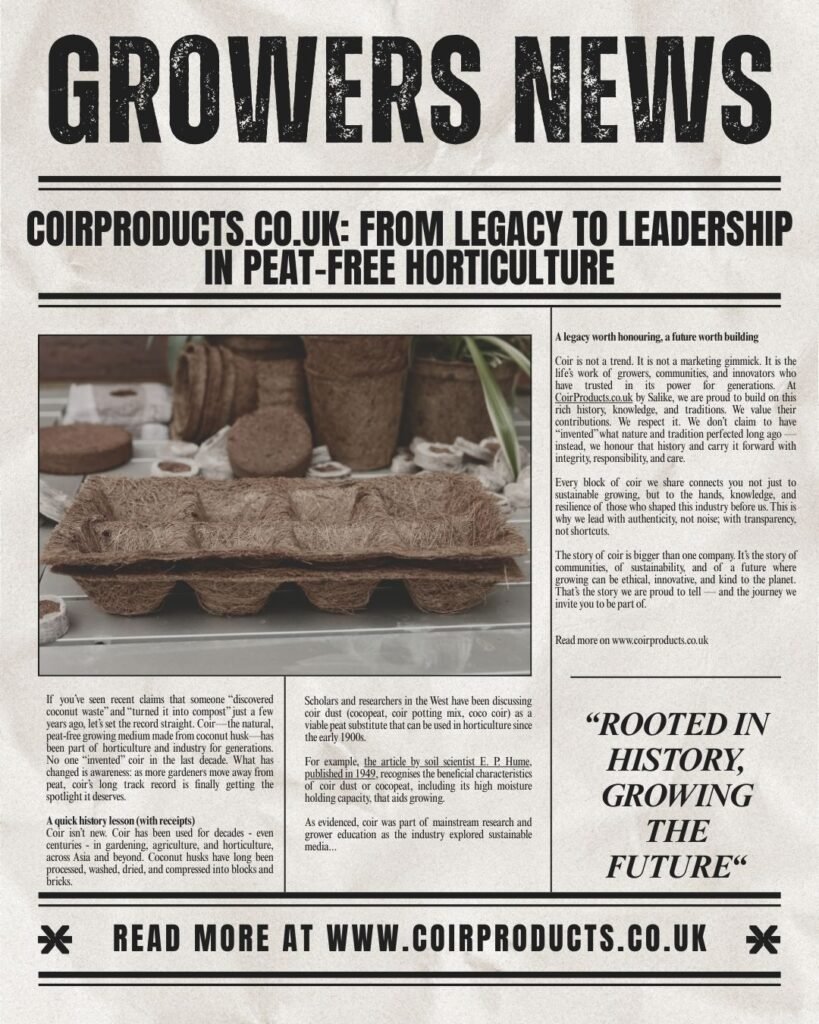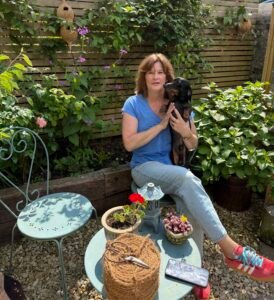
Transform Your Garden with Biodegradable Mulch Mats
In a world where every choice we make ripples through our planet and our personal sanctuary, your garden deserves more than the ordinary. It deserves

Coir didn’t arrive in the last few years, it’s been powering growers for decades, and we at CoirProducts are proud to build on this legacy!
If you’ve seen recent claims that someone “discovered coconut waste” and “turned it into compost” just a few years ago, let’s set the record straight. Coir—the natural, peat-free growing medium made from coconut husk—has been part of horticulture and industry for generations. No one “invented” coir in the last decade. What has changed is awareness: as more gardeners move away from peat, coir’s long track record is finally getting the spotlight it deserves.
A quick history lesson (with receipts)
Coir isn’t new. Coir has been used for decades – even centuries – in gardening, agriculture, and horticulture, across Asia and beyond. Coconut husks have long been processed, washed, dried, and compressed into blocks and bricks.
Scholars and researchers in the West have been discussing coir dust (cocopeat, coir potting mix, coco coir) as a viable peat substitute that can be used in horticulture since the early 1900s. For example, the article by soil scientist E. P. Hume, published in 1949, recognises the beneficial characteristics of coir dust or cocopeat, including its high moisture holding capacity, that aids growing. As evidenced, coir was part of mainstream research and grower education as the industry explored sustainable media.
Researchers were trialling coconut coir as a peat alternative for vegetable transplants in the mid-1990s; a 1996 station report concluded coir produced tomato and pepper transplants comparable to leading peat-based mixes, with successful field establishment and yields. In other words, coir was already doing the job nearly thirty years ago.
The 1980s and 1990s, also saw the establishment of companies in the UK that imported coco peat (also known as coir pith, coir potting mix, or coco coir) in various formats including in blocks, bricks, loose, and bulk, for use in horticulture. In fact, we also recently had a chat with someone who introduced coir in blocks to the horticulture retail sector in the 1990s. This 2013 Guardian article identifies how the demand for coir grew in a decade ago as more growers sought alternatives to peat.
Why coir earned its place
So why did scientists and growers embrace coir decades ago?
Peat-free by nature: Coir is made from a renewable by-product of the coconut industry. It delivers structure, porosity and water-holding capacity without the ecological baggage of peat extraction.
Consistent, clean, and versatile: Properly buffered and washed coir offers predictable pH and EC ranges, good air-filled porosity, and excellent root-zone moisture management—ideal for seed starting, container crops, and hydroponics.
Proven performance: From ornamental plugs to fruiting crops, trials since the 1990s have shown coir can match the benchmarks set by leading peat-based mixes when managed correctly.
Clearing up the marketing noise
It’s great to see more brands promoting peat-free options, but suggesting coir only appeared when a company “noticed coconut waste” just a few years back ignores history—and the important work of coir producers and suppliers, growers, researchers, and communities who’ve used and refined coir for decades. We welcome innovation; we don’t welcome historical amnesia.
A legacy worth honouring, a future worth building
Coir is not a trend. It is not a marketing gimmick. It is the life’s work of growers, communities, and innovators who have trusted in its power for generations. At CoirProducts.co.uk by Salike, we are proud to build on this rich history, knowledge, and traditions. We value their contributions. We respect it. We don’t claim to have “invented” what nature and tradition perfected long ago — instead, we honour that history and carry it forward with integrity, responsibility, and care.
Every block of coir we share connects you not just to sustainable growing, but to the hands, knowledge, and resilience of those who shaped this industry before us. This is why we lead with authenticity, not noise; with transparency, not shortcuts.
The story of coir is bigger than one company. It’s the story of communities, of sustainability, and of a future where growing can be ethical, innovative, and kind to the planet. That’s the story we are proud to tell — and the journey we invite you to be part of.

In a world where every choice we make ripples through our planet and our personal sanctuary, your garden deserves more than the ordinary. It deserves

We continue our special series highlighting grower’s experience of using coir with Kay @brook_cottage_. With a love for growing a mix of flowers, fruits, and